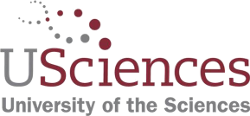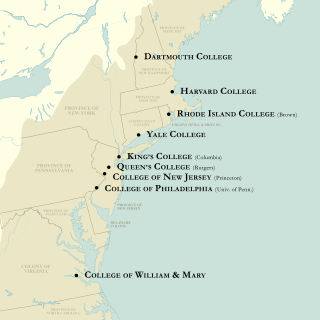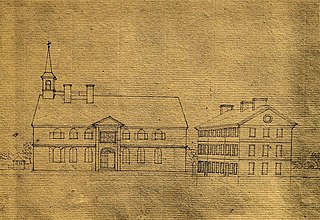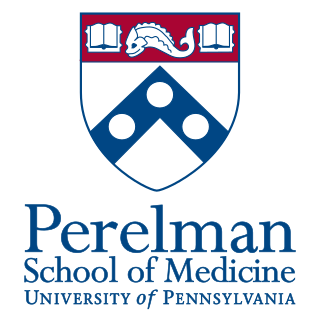Related Research Articles

Thomas Jefferson University is a private research university in Philadelphia, Pennsylvania. Established in its earliest form in 1824, the university officially combined with Philadelphia University in 2017. The university is named for U.S. Founding Father and president Thomas Jefferson. It is classified among "R2: Doctoral Universities – High research activity".

University of the Sciences in Philadelphia, previously Philadelphia College of Pharmacy and Science (PCPS), was a private university in Philadelphia, Pennsylvania. On June 1, 2022, it officially merged into Saint Joseph's University.

The Province of Pennsylvania, also known as the Pennsylvania Colony, was a British North American colony founded by William Penn, who received the land through a grant from Charles II of England in 1681. The name Pennsylvania was derived from "Penn's Woods", referring to William Penn's father Admiral Sir William Penn.

The colonial colleges are nine institutions of higher education chartered in the Thirteen Colonies before the founding of the United States of America during the American Revolution. These nine have long been considered together, notably since the survey of their origins in the 1907 The Cambridge History of English and American Literature.

The Academy and College of Philadelphia (1749–1791) was a boys' school and men's college in Philadelphia in the colonial-era Province of Pennsylvania.

The Perelman School of Medicine, commonly known as Penn Med, is the medical school of the University of Pennsylvania, one of seven Ivy League medical schools in the United States. The medical school is based in Philadelphia. Founded in 1765, it was the first medical school in the United States.
The Commonwealth System of Higher Education is a statutory designation by the Commonwealth of Pennsylvania that confers "state-related" status on four universities in Pennsylvania: Lincoln University, the Pennsylvania State University, Temple University, and the University of Pittsburgh. The designation establishes the schools as an "instrumentality of the commonwealth" and provides each university with annual, non-preferred financial appropriations in exchange offering tuition discounts to students who are residents of Pennsylvania and a minority state-representation on each school's board of trustees.

The first university in the United States is a status asserted by more than one university in the United States. Harvard University, founded in 1636, is the oldest operating university in the United States. Up until 1946, however, when the Philippines ceased being a U.S. territory, the University of Santo Tomas in Manila, which was established in 1611, was considered the first university under the American flag.

The Episcopal Academy, founded in 1785, is a private, co-educational school for grades Pre-K through 12 based in Newtown Square, Pennsylvania. Prior to 2008, the main campus was located in Merion Station and the satellite campus was located in Devon. The Newtown Square facility is on a 123-acre (0.50 km2) campus. The Academy is affiliated with the Episcopal Church.

The Blockley Almshouse, later known as Philadelphia General Hospital, was a charity hospital and poorhouse located in West Philadelphia. It originally opened in 1732/33 in a different part of the city as the Philadelphia Almshouse. Philadelphia General Hospital closed in 1977.
The Pennsylvania Museum and School of Industrial Art (PMSIA), also referred to as the School of Applied Art, was a museum and teaching institution which later split into the Philadelphia Museum of Art and University of the Arts. It was chartered by the Commonwealth of Pennsylvania on February 26, 1876 in response to the Centennial International Exhibition held in Philadelphia that year.

Penn State Brandywine is a commonwealth campus of the Pennsylvania State University located in Middletown Township, Pennsylvania. The campus was formerly known as Penn State Delaware County. The campus has baccalaureate and associate degrees and certificate programs. The campus is located on over 112 acres (450,000 m2) of grounds. In August 2017, the campus established on-campus housing for the first time with the opening of Orchard Hall, a 250-bed dormitory.

Houston Hall is the student union of the University of Pennsylvania, in Philadelphia, Pennsylvania. Completed in 1896, it was the first student union built on an American college campus.

Sleeper's College was a college founded by Josiah Sleeper in Chester, Pennsylvania, in 1910. In 1971, the college moved a few miles to 2800 Edgmont Avenue in Parkside, Pennsylvania, where it operated until 1989.
Hussian College was a private art school in Philadelphia, Pennsylvania. Established in 1946, it offered only one degree, the Bachelor of Fine Arts (BFA). It has a campus in Los Angeles, the Studio School. In August 2023, the college abruptly announced that it was closing.

The Pennsylvania School for the Deaf is the third-oldest school of its kind in the United States. Its founder, David G. Seixas (1788–1864), was a Philadelphia crockery maker-dealer who became concerned with the plight of impoverished deaf children who he observed on the city's streets. The current school building is listed by the National Register of Historic Places, and two former campuses are similarly recognized.

Universal Audenried Charter High School , formerly Charles Y. Audenried High School, is a high school servicing the Grays Ferry area of Philadelphia. The school was originally located at the Charles Y. Audenried Junior High School but was rebuilt in 2008. It was previously directly operated by the School District of Philadelphia. It is still a part of the district's system, and some South Philadelphia residences are assigned to Audenried.
The University of Pennsylvania College of Arts & Sciences (CAS) is the oldest undergraduate college at the University of Pennsylvania, a private Ivy League university, situated on the university's main campus in University City, Philadelphia. The college traces its roots to the establishment of a secondary school known as Unnamed Charity School in 1740. In 1749, Benjamin Franklin and twenty-one leading citizens of Philadelphia officially founded a secondary school named Academy of Philadelphia. In 1755, the secondary school was expanded to include a collegiate division known as College of Philadelphia. The secondary and collegiate institutions were known collectively as The Academy and College of Philadelphia. The college received its charter from Thomas Penn and Richard Penn. Penn CAS is the oldest institution of higher learning in the state of Pennsylvania and the sixth-oldest chartered college in the United States.
The University of Pennsylvania is a private Ivy League research university in Philadelphia, Pennsylvania, U.S. Its history began when in 1740, when a group of Philadelphians organized to erect a great preaching hall for George Whitefield, a traveling evangelist. The building was designed and constructed by Edmund Woolley and was the largest building in Philadelphia at the time, drawing thousands of people the first time in which it was preached. In the fall of 1749, Ben Franklin circulated a pamphlet, "Proposals Relating to the Education of Youth in Pensilvania," his vision for what he called a "Public Academy of Philadelphia". On June 16, 1755, the College of Philadelphia was chartered, paving the way for the addition of undergraduate instruction.
References
- Penn in the 18th Century - at Penn's archives
- at "The University of Pennsylvania" by Francis N. Thorpe
39°57′00″N75°11′31″W / 39.950°N 75.192°W